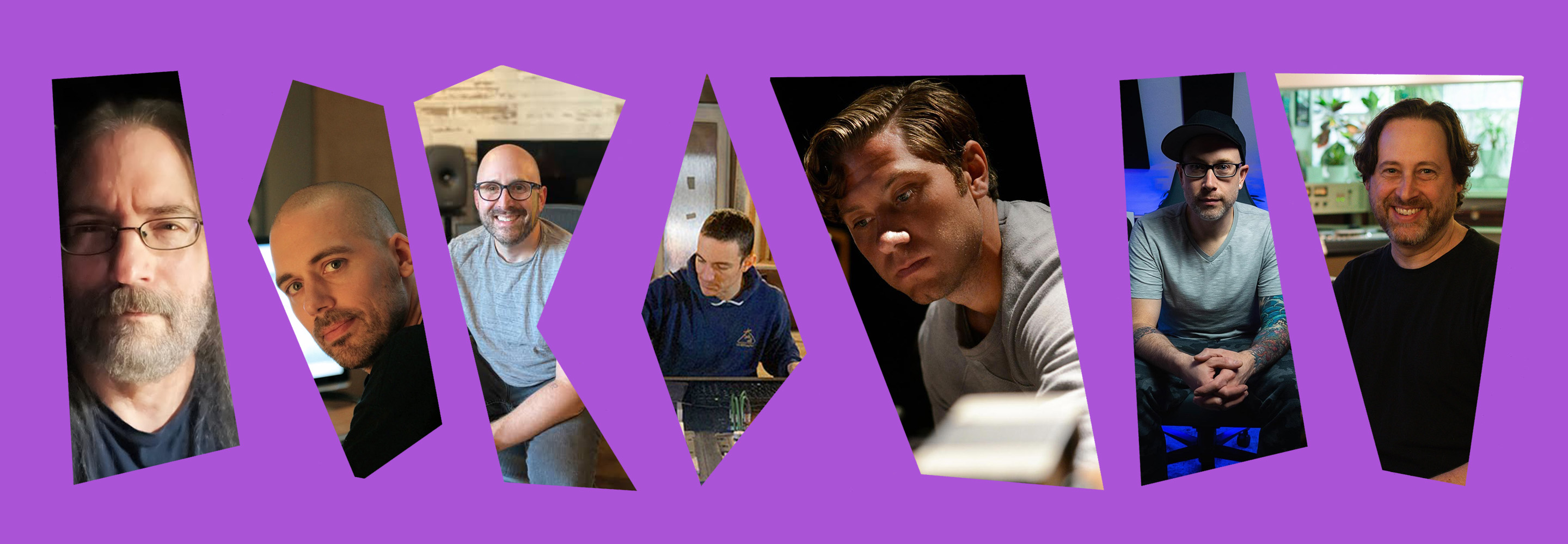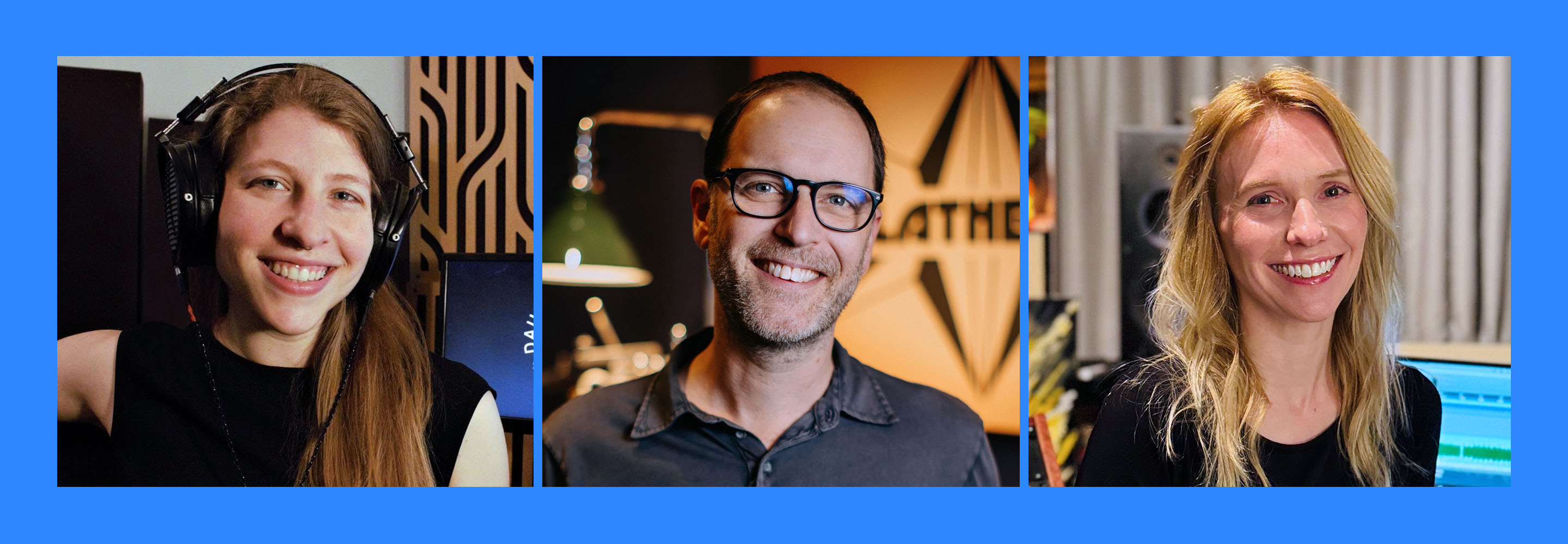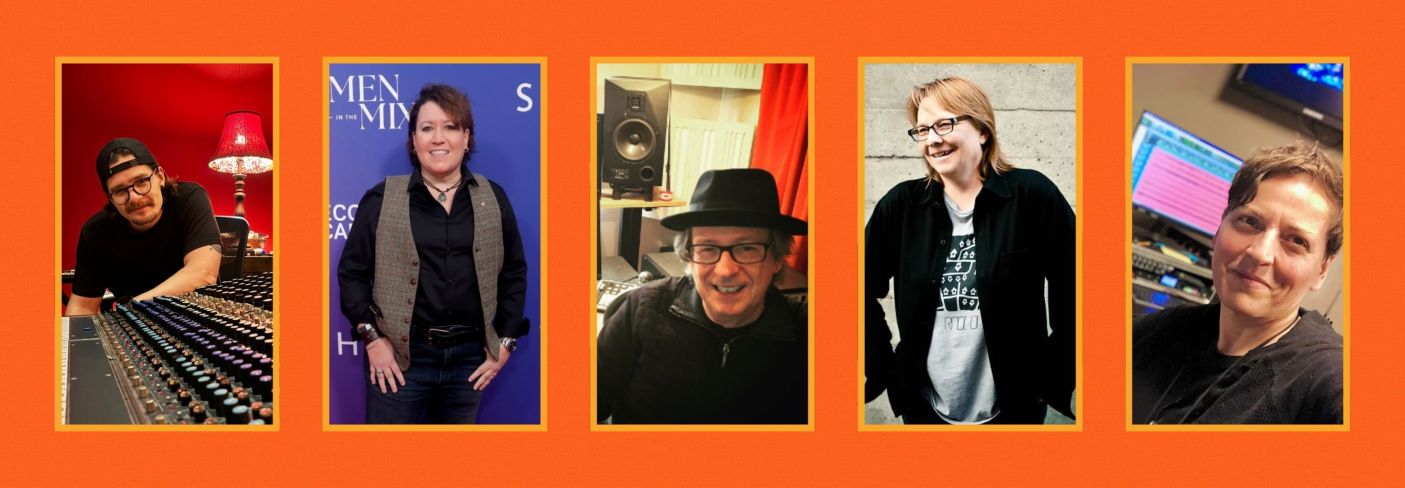
From the pros: mixing tips I wish I knew when I started
What do pro mix engineers know that you don't? Uncover invaluable insights on common mistakes, quick improvements, and essential tips directly from audio industry veterans.
There's a ton of information available online about audio mixing, the process of blending different sound elements in a song (like vocals, drums, and instruments) to create a cohesive and balanced final track.
It's also true that anyone can post advice online, and not all of it is accurate or helpful.
To make sure you're getting the best information, we've gone directly to experienced audio engineers. We've asked them to answer the most common questions people have when they're trying to improve their own mixing skills.
So read on to learn what to do, what to avoid, and what to focus on if you're new to mixing.
You can incorporate some of these tips into your mix session using


Elements Suite
Meet the professional mix engineers
We’ve turned to some incredible people for their input to some common mixing questions: What are the most common mixing mistakes beginners make? What is the single most important mixing tip? How can I improve my mixes quickly?
Between them there are decades of experience, with credits spanning several genres.
We posed these questions to Barry Rudolph (Rod Stewart, Lynyrd Skynyrd, Hall & Oates), Cheryl Pawelski (Wilco, Hank Williams, Bobby Rush), Catharine Wood (GEM, Anna Ash, Billy Lawler), Heidi Trefethen (Tammy Hall, Jessica Jones & Mark Taylor, Lucy Kaplansky), and Jorge 'Quaz' Palacio (Maná, Drake, Future) and have compiled their answers below. We’ve kept their answers unedited except for clarity.

Professional mix engineers
What are the most common mixing mistakes beginners make?
We sat down with several professional mix engineers to get their take on the most common mistakes beginners make in mixing. Here's what they had to say.
Quaz highlights the importance of foundational understanding and clear communication immediately.
Quaz: "Understanding what is volume versus gain, and how to use each accordingly. Also having an accurate way to compare references from the client will help everyone get on the same page, as much as possible."
Heidi, meanwhile, pinpoints several interconnected pitfalls related to contextual mixing and proper signal flow.
Heidi: "One of the most common mistakes is mixing in solo. It’s a natural instinct to want to 'perfect' an element on its own, but audio exists in a context. You need to shape sounds in relation to each other or you risk over-processing and misjudging tonal balance. Another frequent issue is neglecting gain staging, which often results in plugins reacting inconsistently or the mix lacking headroom.
Also, beginners tend to chase loudness too early – using limiters and compressors before they’ve even built a dynamic foundation. That shortcut kills transient detail and mix clarity."
Catharine’s advice brings attention to the specific challenge of low-end clarity, particularly for those working in less-than-ideal monitoring environments.
Catharine: "In my experience, bass management seems to be an elusive process to wrangle for new mixers. A lot of people mixing at home are in headphones – which typically don’t often offer the full range of frequency required to make solid, informed decisions. The headphones may boast a certain lower number spec – but the reality of bass is that it needs space to fully stretch its legs.
So, new mixers end up inadvertently over-saturating the low end, adding when they should actually be subtracting – because they simply can’t hear what they’re doing."
Cheryl’s reflection points to a common artistic oversight: the importance of serving the song as a whole.
Cheryl: "I don’t work with a lot of beginners these days, but I remember back when I was trying my hand at mixing I would lean in, far too heavily on parts of the song I liked/favored, rather than try to see the whole and how all the component parts needed to sit to serve the song."
And Barry’s contributions offer a powerful reminder about the dangers of over-processing and losing sight of the initial feel and spontaneity.
Barry: "The rough mix is where it's at. It's like I always say, if the rough mix sounded better it's because the rough mix has probably been less stressed about and thought over...It's music, not a science project. Many times I've gone too far and made it too good-sounding or too cleaned up and people say 'What happened to the rough mix? This mix doesn't have the feel or the appeal the rough mix had.' It's easy to overdo it."
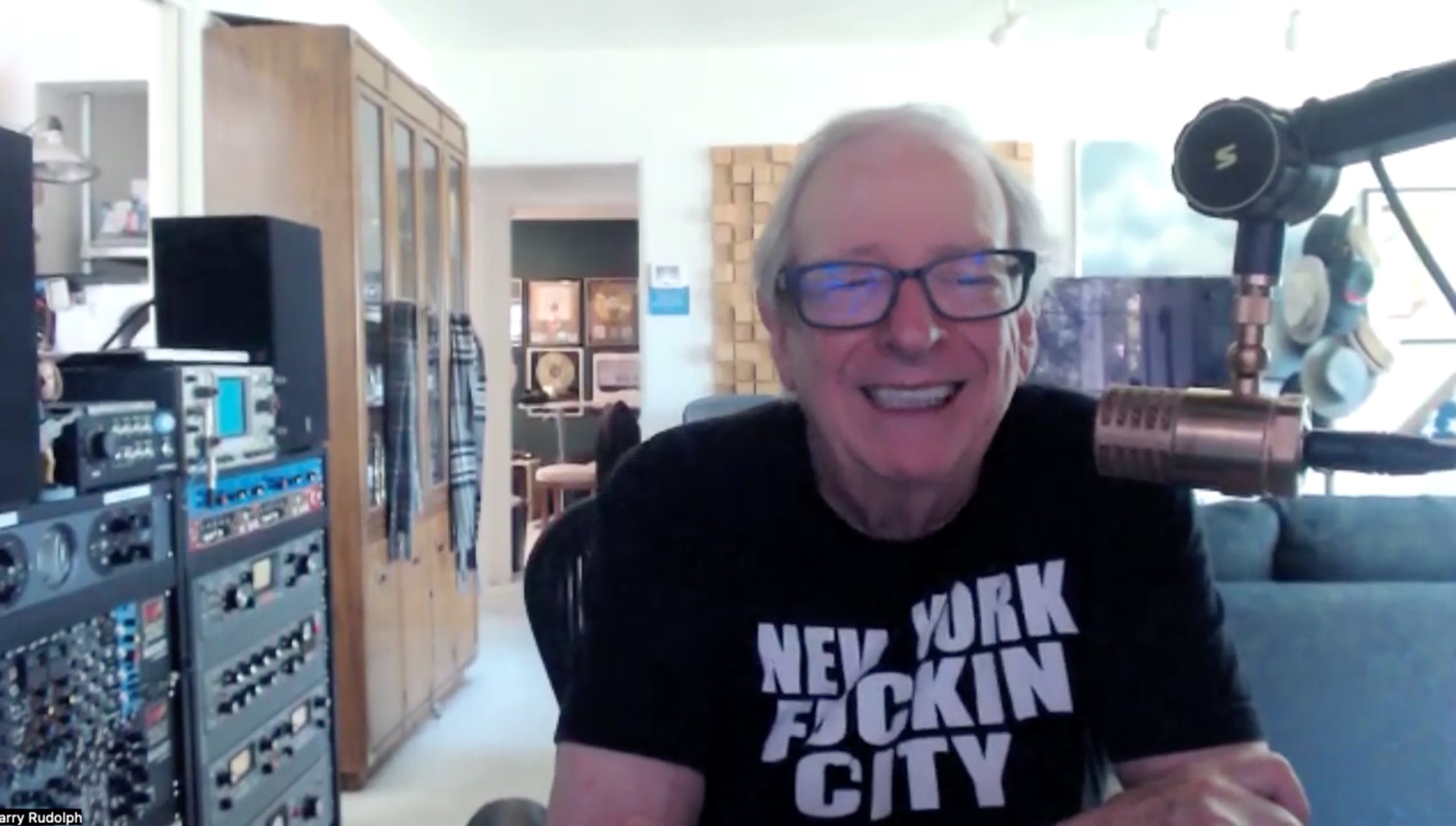
Barry Rudolph talking with Audrey Martinovich via Zoom, June 2025
How can I improve my mixes quickly?
Beyond avoiding common mistakes, what are the fastest ways to elevate your mixing game? Our experts share their top tips for quick and effective improvements.
Quaz champions mastery over multitude.
Quaz: "Understand what each plugin and outboard gear actually does. Getting very comfortable and effective with a few tools will make you a better mixer than having everything in the world but not knowing how to use it."
Heidi offers a two-pronged approach focusing on streamlined processes and real-world evaluation.
Heidi: "Two things: build a consistent workflow and monitor across multiple systems. Create a mix template that reflects your routing preferences – parallel buses, FX chains, VCA groups – so you’re not reinventing the wheel every time. Speed increases when your technical setup supports your creative decisions.
Then, bounce your mix early and often. Reference it in the car, on AirPods, through a phone speaker – this is real-world QA. You’ll instantly hear what translates and what’s only sounding good in your studio."
Catharine brings a crucial point about the listening environment and how improper acoustic treatment, particularly over-absorption in the low end, can severely mislead mixing decisions.
Catharine: "Work in an acoustically treated room that is not over-absorbing your bass. I learned this the hard way back in 2009. I’d just bought my first house and had gone wild acoustically treating the tiny dining room to be my studio workspace. I’d gotten a bunch of those foam treatment kits and put bass traps everywhere.
Every mix that came out of that room had waaaay too much bass - because I kept adding more low end back in. All of the bass frequencies that were being absorbed by the treatment, I was adding back into my mixes. The cooking equivalent of over-salting if you’ve got a reduced sense of taste from a cold or something."
Cheryl's advice centers on the power of instinct and perspective.
Cheryl: "Do not overthink what you are feeling. One can endlessly tweak a track, but I’m a big believer in a quick mix and a review with fresh ears."
And Barry shares the simple (and valuable) technique of taking breaks for renewed perspective.
Barry: "After you've been working on it for a few hours, take a break. Even overnight. I do this all the time, I leave and I come back and I go 'what was I thinking? That's terrible.' Then I fix it and keep going for a while.
This thing I've been working on lately was so poorly recorded and no arrangement, he just had everything play all the time. So there's about 36 tracks of things just playing all the time. So I've been weeding all of that out, plus it has a lot of digital clips that I have to somehow get rid of, so spending more time on that than actually mixing really bothers me."
What is the single most important mixing tip?
When asked to distill their wisdom into a single piece of advice, our expert mix engineers offered insights including technical precision, artistic philosophy, and professional humility.
Quaz recommends a blend of professionalism with artistic integrity.
Quaz: "Professionally: Service the song and service the client, hard to digest but do your best to have no ego. The details really do matter so pay attention. Have clean file management and proper labeling.
Artistically: keep perspective of the big picture. Yes the details matter but specifically in how they interact with the whole. Soloing on tracks should be done so carefully to maintain the collective balance you’re trying to achieve."

Jorge 'Quaz' Palacio in the studio
Heidi's crucial tip revolves around intentionality and serving the song's core essence.
Heidi: "Always mix with intent. Every move should be in service to the song’s emotion and structure. Technically speaking, that translates to things like using subtractive EQ to carve space before compressing, or automating dynamics to enhance transitions instead of relying solely on static compression.
Philosophically, it means not getting stuck tweaking a snare for 20 minutes when the chorus vocal still isn’t hitting. If you keep the big picture in mind – emotion, energy, and momentum – you’ll make more meaningful technical and creative choices."
Catharine's single most important tip is about your listening environment.
Catharine: "Mix on proper audio monitors in a treated room. There are some excellent manufacturers out there now making good monitors that don’t break the bank. Headphones are great for hearing details or specifics in a mix – but, in my experience, listening on good monitors...in an acoustically treated room – is critically important to a balanced, articulate and emotive mix.
Incidentally, when you’re mixing in a great room, tasks are significantly quicker and flow more easily because you can actually hear what you’re doing."
Cheryl's most vital tip centers on the concept of artistic service.
Cheryl: "Serve the song and the artist above all else. You are striving to make clear the intent of the work/artist and not to leave your personal stamp on it unless you are fortunate enough to be in the creative seat alongside the artist. I think of the Brian Enos, John Cales or Daniel Lanois of the world when I make this statement."
And Barry simplifies the most important tip down to overall balance. He emphasizes a fundamental checklist of sonic elements – brightness, low end, and particularly vocal presence – as the essential starting points.
Barry: "Balance, overall. Is it bright enough? Does it have enough bottom end? Where is the bottom end coming from? Is it the kick or the bass or a combination? Vocal presence? Vocal is the most important part…it has to be heard and sound good, so those are all good starting elements. Beyond that, it becomes refinement into style. How much reverb you use, how much delay you use, stuff like that.
What do you wish you had known when you started?
Hindsight is 20/20, especially in mixing. Our seasoned professionals share the invaluable lessons they wish they had grasped earlier in their careers.
Quaz underscores the critical role of foundational accuracy in the monitoring environment.
Quaz: "Accurate rooms and monitoring is the foundation. Then work with the full master chain active from the beginning so that as you progress make adjustments as needed but understand your sonic end goal in LUFS and be expressive and dynamic within that range, rather than dialing in a sound and then having to “tame it” to make the product fit for distribution."
Heidi highlights several technical "secret sauces" that she wished she'd mastered earlier.
Heidi: "Gain staging at every phase is fundamental – I like to target around -18 dBFS input levels to keep analog-modeling plugins operating at their best. I also rely heavily on parallel processing, especially for drums, vocals, and mix glue. It lets me add punch and energy without sacrificing clarity or headroom.
Automation is the secret sauce – I automate reverb sends, filter sweeps, vocal presence – it brings life and movement to the mix. Also, I treat saturation like seasoning: subtle harmonic enhancement on buses can add warmth and cohesion without the need for over-compression."
Catharine's insight is focused on professional demeanor and client collaboration.
Catharine: "When I’m doing client projects – and I’ve been asked to execute something a little off the wall or unusual - I just do it. Without judgement. Or a question. As an engineer, it’s natural to wonder WHY...but it’s important to remember that you’re helping facilitate the producer’s vision...so I tend to leave judgement at the door (unless asked specifically for my opinion).
Even though the work is highly analytical, I don’t always have to know why I’m asked to do something particular. And I’d rather go with the flow than get into an intellectual discussion that slows (stifles) the process. Keep the vibes easy going."
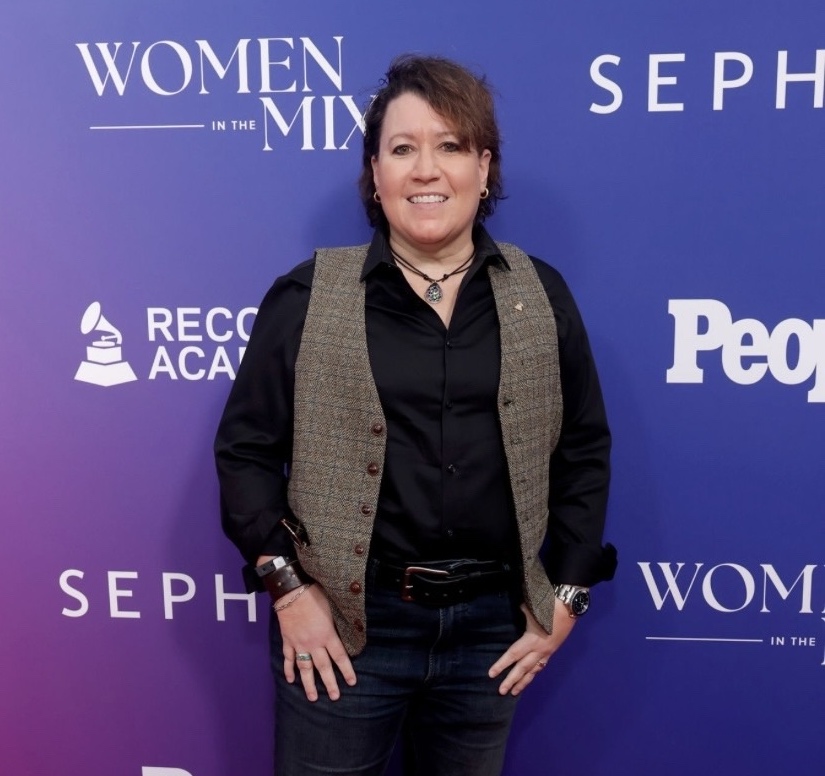
Catharine Wood at a Women in the Mix event presented by the Recording Academy
Cheryl offers a powerful lesson on historical context and workflow alignment.
Cheryl: "Because I work in the historical area, it is absolutely vital to research the studio and equipment the songs were recorded on before getting into a mix. Oftentimes, my engineers and I will need to mix to the original recordings. Meaning, for example, if we know what reverb was used, we employ it again if at all possible.
If we can mix from the same source (for example, from the same machine the songs were recorded on), we do. I’ve always felt that a 1970 recording does not need a 2025 sounding bonus track! So understanding the conditions/environment of the original recordings whether they were made a week ago or 100 years ago should dictate your workflow.
Never, ever forget to have fun making music. Never, ever take it for granted!"
Barry's advice centers around studio etiquette and professional humility, particularly for those starting out.
Barry: "If you're coming into the studio as an assistant…your opinion means nothing so don't volunteer that. You're not in the position to offer your opinion, not only that, it doesn't count. You can actually get kicked out of a session for offering an opinion. There's a protocol, there's studio etiquette, things you don't do.
Even though it might be true, there's a time and a place to tell people something they don't want to hear. Most of the stuff I learned coming up was about that. Be sociable, treat people like people. The expectation that you're going to walk into a job and be at the top of the game isn't true in any job."
Start using these mix tips today!
In comparing the responses from the pros, I noted several things their answers had in common. Each one mentioned mixing in a well-treated room and mixing with the big picture in mind. It can be easy to get lost in small details that aren't as important as the overall vision of the mix.
Many thanks to Barry Rudolph, Catharine Wood, Heidi Trefethen, Cheryl Pawelski, and Quaz Palacio for their time and thoughtfulness in providing these responses! If you want yet another perspective, check out this advice from Hit Boy's David Kim. We have also compiled all of our best mixing advice right here to help get you started.

